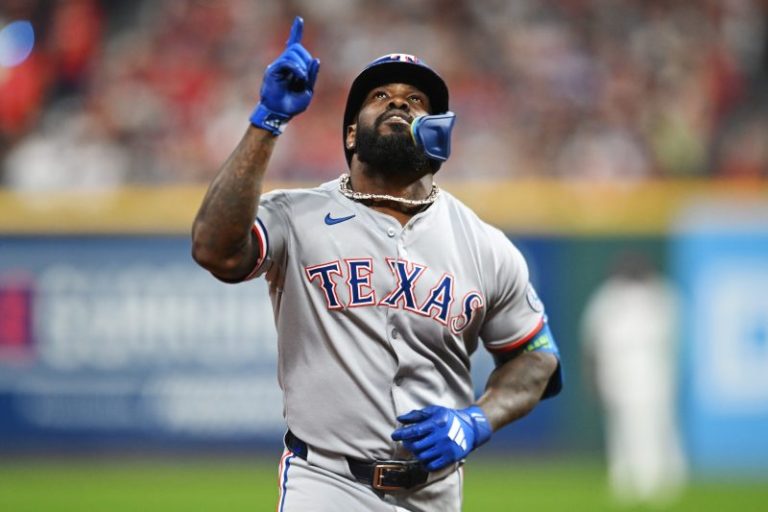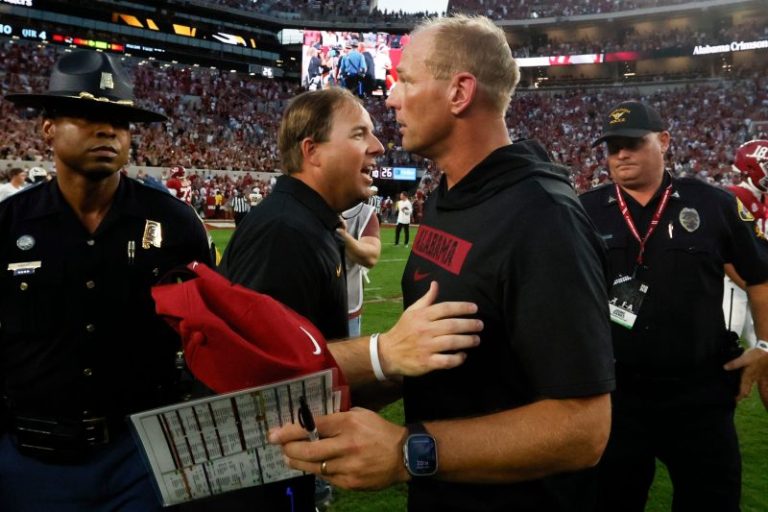A pair of AFC playoff contenders meet on ‘Monday Night Football’ to conclude Week 15.
The Pittsburgh Steelers (7-6) host the Miami Dolphins (6-7) with both teams enduring moments of success and disarray thus far in 2025.
The team from South Beach got off to a disastrous 2-7 start to the season, which included losing star wide receiver Tyreek Hill to a gruesome leg injury in Week 4. Coach Mike McDaniel shouldered the brunt of the blame, but the Dolphins have rallied over the last month, winning four straight entering tonight’s game.
Pittsburgh just notched its biggest win of the season last week defeating the Baltimore Ravens on the road and is in the driver’s seat for the AFC North title entering the final four weeks of the regular season.
The Aaron Rodgers-Mike Tomlin partnership and the Steelers squad has faced its share of adversity as well, though, as Pittsburgh lost five of its last seven before beating Baltimore in Week 14.
Tomlin and the Steelers haven’t won a playoff game in eight years, but they hope their re-energized 42-year-old – now second-oldest in NFL – quarterback can replicate the success he had in Week 14 the rest of the way and snap that streak.
These teams made a blockbuster trade in the offseason with Pittsburgh sending Miami safety Minkah Fitzpatrick for Jalen Ramsey and Jonnu Smith and all three are in action tonight. But who will come out on top tonight and boost their playoff chances?
USA TODAY Sports will provide updates, highlights and more from the ‘Monday Night Football’ matchup between the Steelers and Dolphins below.
What channel is Steelers vs. Dolphins Monday Night Football on tonight?
TV channel: ESPN
The Week 15 ‘MNF’ matchup between the Steelers and Dolphins will be broadcast on ESPN.
What time is the Steelers vs. Dolphins game tonight?
Start time: 8:15 p.m. ET | 5:15 p.m. CT
The Steelers and Dolphins are set to kick off at 8:15 p.m. ET, the customary start time for ‘Monday Night Football.’ The Dolphins travel to Acrisure Stadium in Pittsburgh, Pennsylvania for the matchup.
Steelers vs. Dolphins stream
Live stream: Fubo | ESPN Select | ESPN Unlimited
Cord-cutters looking for a stream of the Week 15 ‘MNF’ matchup can tune to Fubo, which carries the ESPN family of networks, CBS, Fox, ABC and the NFL Network. Fubo also offers a free trial.
ESPN’s streaming services, Select and Unlimited, will also carry the game.
Watch ‘Monday Night Football’ with Fubo
Steelers vs. Dolphins picks, predictions:
Here’s how USA TODAY Sports’ NFL experts feel tonight’s game will go:
Jarrett Bell: Steelers 23, Dolphins 20
Nick Brinkerhoff: Steelers 24, Dolphins 16
Chris Bumbaca: Steelers 24, Dolphins 22
Nate Davis: Steelers 20, Dolphins 17
Tyler Dragon: Steelers 26, Dolphins 20
Mike Middlehurst-Schwartz: Dolphins 24, Steelers 23
Steelers vs. Dolphins odds, moneyline, O/U
Provided by BetMGM Sportsbook; access USA TODAY Sports Scores and Sports Betting Odds hub for a full list.
Moneyline (ML): Pittsburgh -165 (Bet $165 to win $100) | Miami +140 (Bet $100 to win $140)
Against the spread (ATS): Pittsburgh -3 (-115) | Miami +3 (-105)
Over/Under (O/U): 41.5 (O: -110 | U: -110)
Steelers inactives vs. Dolphins
WR Roman Wilson
QB Will Howard (3rd QB)
OL Andrus Peat DT
Brodric Martin-Rhodes
OLB T.J. Watt
DT Derrick Harmon
Dolphins inactives vs. Steelers
QB Quinn Ewers (3rd QB)
DB Elijah Campbell
CB AJ Green III
OL Larry Borom
WR Tahj Washington
DT Matthew Butler
Is Jaylen Warren playing tonight?
The Steelers running back was added to the injury report Monday morning after waking up with an illness. Warren woke up under the weather but is optimistic about playing tonight, per Tom Pelissero.
Steelers vs. Dolphins weather report
The temperature is expected to be 22 degrees around kickoff in Pittsburgh. There is no snow in the forecast.
What is Tua Tagovailoa’s record in cold games?
Tua has never won an NFL game when the temperature is below 40 degrees at kickoff. Here is a breakdown of Tua’s record as an NFL starter in cold weather:
40 degrees or colder: 0-5
45 degrees or colder: 1-6
50 degrees or colder: 2-8
55 degrees or colder: 4-13
NFL playoff picture: AFC
Denver Broncos (12-2, AFC West leaders)*
New England Patriots (11-3, AFC East leaders)
Jacksonville Jaguars (10-4, AFC South leaders)
Pittsburgh Steelers (7-6, AFC North leaders)
Los Angeles Chargers (10-4, wild card No. 1)
Buffalo Bills (10-4, wild card No. 2)
Houston Texans (9-5, wild card No. 3)
In the hunt: Indianapolis Colts (8-6), Baltimore Ravens (7-7), Miami Dolphins (6-7).
* Clinched playoff berth
Eliminated: New York Jets (3-10), Cleveland Browns (3-10), Las Vegas Raiders (2-11), Tennessee Titans (2-11), Kansas City Chiefs (6-8), Cincinnati Bengals (4-10).
NFL playoff picture: NFC
Los Angeles Rams (11-3; NFC West leaders)*
Chicago Bears (10-4; NFC North leaders)
Philadelphia Eagles (9-5; NFC East leaders)
Tampa Bay Buccaneers (7-7; NFC South leaders)
Seattle Seahawks (11-3, wild card No. 1)
San Francisco 49ers (10-4, wild card No. 2)
Green Bay Packers (9-4-1; wild card No. 3)
In the hunt: Detroit Lions (8-6); Carolina Panthers (7-7); Dallas Cowboys (6-7-1)
Eliminated: Minnesota Vikings (6-8); Atlanta Falcons (5-9); New Orleans Saints (4-10); Washington Commanders (4-10); Arizona Cardinals (3-11); New York Giants (2-12)
2026 NFL Draft order
Here’s the updated first-round order after Week 15 results, according to Tankathon, which calculates strength of schedule differently from the NFL:
New York Giants: 2-12 record; .536 strength of schedule
Las Vegas Raiders 2-12; .548 SOS
Tennessee Titans: 2-12; .576 SOS
Cleveland Browns: 3-11; .483 SOS
New York Jets: 3-11; .538 SOS
Arizona Cardinals: 3-11; .571 SOS
New Orleans Saints: 4-10; .494 SOS
Washington Commanders: 4-10; .508 SOS
Cincinnati Bengals: 4-10; .521 SOS
Atlanta Falcons (pick belongs to Los Angeles Rams): 5-9; .502 SOS
Kansas City Chiefs: 6-8; .519 SOS
Minnesota Vikings: 6-8; .521 SOS
Miami Dolphins: 6-7; .481 SOS
Dallas Cowboys: 6-7-1; .447 SOS
Baltimore Ravens: 7-7; .500 SOS
Carolina Panthers: 7-7; .519 SOS
Detroit Lions: 8-6; .496 SOS
Indianapolis Colts (pick belongs to Jets): 8-6; .530 SOS
Tampa Bay Buccaneers: 7-7; .519 SOS
Pittsburgh Steelers: 7-6; .508 SOS
Philadelphia Eagles: 9-5; .490 SOS
Houston Texans: 9-5; .542 SOS
Green Bay Packers (pick belongs to Cowboys): 9-4-1; .475 SOS
Buffalo Bills: 10-4; .460 SOS
Chicago Bears: 10-4; .445 SOS
Los Angeles Chargers: 10-4; .464 SOS
San Francisco 49ers: 10-4; .492 SOS
Jacksonville Jaguars (pick belongs to Browns): 10-4; .492 SOS
New England Patriots: 11-3; .374 SOS
Seattle Seahawks: 11-3; .494 SOS
Los Angeles Rams: 11-3; .521 SOS
Denver Broncos: 12-2; .433 SOS
4th & Monday: Our NFL newsletter always brings the blitz
Do you like football? Then you’ll enjoy receiving our NFL newsletter in your inbox.
Get the latest news, expert analysis, game insights and the must-see moments from the NFL conveniently delivered to your email inbox. Sign up now!










